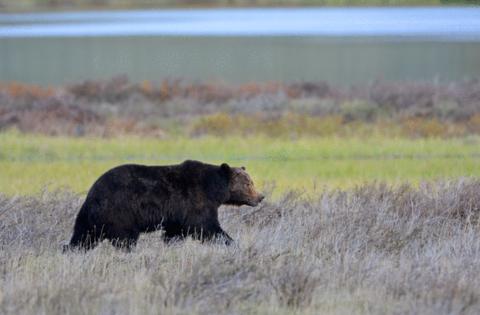Feds want grizzly bears back in Washington´s North Cascades
Published in Science & Technology News
SEATTLE — The National Park Service and U.S. Fish & Wildlife Service published a final series of proposals Thursday calling for reintroducing grizzly bears to the North Cascades.
Grizzlies roamed much of the West before colonization. A keystone species, bears are known to till and aerate soil as they search for potato-like roots like Alpine sweetvetch, munch on berries, and later deposit the seeds through their scat. The omnivores love to snatch salmon from the river and will steal kills from other predators.
Place names in the North Cascades recognize Indigenous peoples’ long coexistence with the bears. Stetattle Creek was derived from stəbtabəl’ (stub-tahb-elh), or grizzly bear, in the Lushootseed language spoken by the Upper Skagit people who lived on these lands for at least 10,000 years.
Over time, white settlers wiped the bears off the landscape. Beginning in the mid-1800s, they killed more than 3,000 for their pelts while miners and homesteaders killed countless others. The big brown bears, with a hump of heavy muscle in their shoulders, never bounced back.
No one knows how many grizzly bears remain. The last verified sighting in the U.S. North Cascades was more than two decades ago, and only two sightings have been verified on the British Columbia side of the mountains since.
Returning grizzlies to the North Cascades has been a decadelong on-again, off-again effort. In 2022, the federal agencies initiated the latest effort.
And in the fall, the agencies offered three options for the bears’ future in the North Cascades. One option would be to do nothing and the other two would be to reintroduce bears to the area. Under both reintroduction options, about three to seven grizzly bears would be released into the North Cascades each year over five to 10 years. The goal is to establish an initial population of 25 grizzly bears.
Once the initial population is reached, a population of 200 bears would likely be achieved in about 60 to 100 years, according to the agencies.
One option outlined in the plan would allow grizzly bears to be managed as a threatened species under the Endangered Species Act, and permit some to be captured, moved or killed only under specific circumstances, like the defense of life and scientific or research activities.
The second, identified as the agencies preferred alternative on Thursday, is looser and would allow landowners to call on the federal government to remove bears if they pose a threat to livestock, for instance.
...continued
©2024 The Seattle Times. Visit seattletimes.com. Distributed by Tribune Content Agency, LLC.







Comments